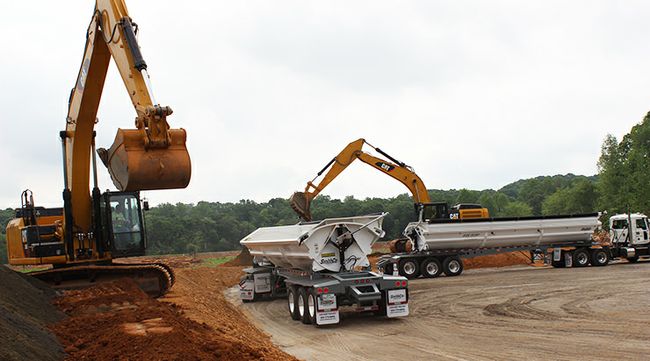Duke Energy seeks to recover costs for safely managing coal ash amid stricter regulations

Duke Energy Progress, which serves electric customers in central and eastern North Carolina and in the Asheville region, filed with the North Carolina Utilities Commission (NCUC) earlier this month to recover costs related to, among other things, coal ash management.
The company has incurred costs since 2015 from its efforts to comply with federal and state coal ash regulations, close ash basins at eight sites in the Carolinas and recycle nearly 2 million tons of coal ash from its Sutton Plant located near located near Wilmington, North Carolina.
“Duke Energy looks at our environmental management holistically and long-term to make the best technology investment decisions on behalf of our customers,” Sally Thelen, Duke Energy’s communications manager for Ohio and Kentucky, told Daily Energy Insider. “We are diligently working to safely close ash basins, including equipment upgrades and dry ash handling conversions, as part of our comprehensive strategy to comply with federal and state regulations, including the federal coal combustion residuals rule.”
Duke Energy requested approval from the NCUC to increase revenues by about $477 million to help pay for coal ash management, recent work to modernize its power plants and also to rebuild part of its energy system after severe storms.
The Disposal of Coal Combustion Residuals from Electric Utilities final rule from the U.S. Environmental Protection Agency (EPA) is designed to address risks related to contaminants leaking into ground water, being released into the air and the catastrophic failure of coal ash surface impoundments. It also created recordkeeping and reporting requirements, including some to a website accessible to the public. Additionally, it defines safe use of recycled coal ash.
Coal ash, also known as coal combustion residuals (CCR), is produced when power plants burn coal to produce electricity. Coal ash includes several byproducts, including a light, powdery substance called fly ash and a coarse material called bottom ash that forms on the bottom of coal furnaces, among others.
Coal ash can contain contaminants such as mercury, cadmium and arsenic, according to the EPA. However, these substances are relatively rare in coal ash, leading the EPA not to classify it as a hazardous substance. In 2014, coal plants generated approximately 130 million tons of coal ash, according to the American Coal Ash Association.
Duke Energy has said that it recycles approximately 75 percent of the coal combustion byproducts it produces at its North Carolina facilities and is recycling or plans to reuse material at every one of its plant sites in the state.
The company is also closing a number of its ash basins. In most cases, it caps them in place and then relocates the coal ash to a lined landfill that is then closed with a synthetic cover as well as dirt and vegetation. As per federal regulations, the company must also work to protect groundwater from contamination by coal ash.
“In November 2016, Duke Energy announced our plans to close 36 ash basins across the states we serve,” Thelen said. “We’re making great progress in closing ash basins in ways that protect people, the environment and customers’ wallets.”
The Kentucky Public Service Commission (PSC) recently approved a plan by Duke Energy to spend $94 million to transition from storing coal ash in ponds, which are prohibited by the new regulations, to disposing of it in landfills at its East Bend power plant in Boone County. The funds will also be used to close and repurpose the existing waste pond and build facilities for handling and treating wastewater from the plant.
“Transporting the ash to our on-site landfill at East Bend keeps the material safely on plant property and minimizes disruption to the community,” Thelen said. “We have chosen to excavate the basin at East Bend, so that it can be repurposed for other needs at the station. Duke Energy has already committed to safely close all of its 60 coal ash basins once they were no longer needed for ash management. The federal CCR rule accelerated that process at East Bend.”
Duke Energy will mix fly ash from its East Bend plant with waste from the facility’s air pollution-reducing scrubbers before placing it in the landfill. Once disposed of, the mixture will solidify into a concrete-like substance.
The plan, which was found to be the least costly of the proposed strategies, will be completed in two phases, the first of which is expected to be completed in December 2018 and the second in April 2020.
